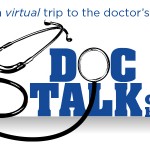Breast cancer is something moms must always stay up-to-speed on, so we did a question and answer session with Dr. James Irwin of Mercy Health. Dr. Irwin is a board certified surgeon who did his Master’s thesis on cancer research. He is also the son of a breast cancer survivor who underwent bilateral mastectomies during her fight against the disease.
Recent reports have confused me about how often I should get a mammogram. What’s the current recommendation on how frequently I should have this test?
Certainly the reports are confusing and differ depending on where you look. I follow the recommendations from the American Cancer Society, which are yearly mammograms starting at the age of 40 and continual as long as the woman is in good overall health. These are also the recommendations that are supported by the American College of Surgeons.
What is dense breast tissue and how does it affect screenings for breast cancer?
Dense breast tissue is normal breast tissue that can contain more connective tissue or breast ducts and lobules. There are many things that can influence the presence of dense breast tissue. A few of these are age, genetics, hormone use, and which phase of menses a woman is in. Dense breast tissue can make screening mammography more difficult. Therefore, it is felt that mammography may be best performed within the first two weeks after menses (monthly cycle) has started. In women who have dense breasts, supplemental screening techniques, such as whole breast ultrasound, may be used for better detection.
I panic anytime I feel anything in my breast tissue, which makes me want to avoid doing the self-exams. Are some lumps or bumps normal in healthy breasts?
Most lumps and bumps in the breast are usually normal and can come and go in response to the natural hormones in a woman’s body. The only advice I can give on self-exams is get instruction on how to do a proper self-exam. Know how your breasts feel and recognize changes that occur in your normal cycle. By knowing how your own breasts feel on a regular basis, you are more able to detect possible harmful changes.
What are the latest advancements in the detection and treatment of breast cancer?
Detection techniques have been improved with the age of digital, high-definition mammography. The use of MRI has also allowed for better detection in high risk women and in women who are already diagnosed with breast cancer. Computer-aided detection (CAD) can be used on digital mammography. The use of genetics and hormone testing on tumors are advancements in treatment that allow for targeted therapy as well as calculation of risk of recurrence.
I have a friend who hasn’t had a mammogram because she says that breast cancer doesn’t “run in her family.” Is there always a hereditary link with this disease?
No. Less than 10% of all breast cancers are related to an inherited genetic mutation. Therefore the vast majority of breast cancers are related to non-inherited factors. My advice is tell your friend to go get her mammogram.
Over the years, how has the prognosis changed for a woman with breast cancer who has detected the disease early?
Over the years, the incidence of breast cancer has increased. This has been because of the increased screening for breast cancer. Yet while the numbers have increased, the amount of breast cancers we are finding at earlier stages has increased. And prognosis for a woman with early stage dis ease is almost always going to be much better than finding breast cancer at a more advanced stage. Also, as we come to know this disease better through research, we are able to better tailor our treatments to the needs of individual women.
ease is almost always going to be much better than finding breast cancer at a more advanced stage. Also, as we come to know this disease better through research, we are able to better tailor our treatments to the needs of individual women.
Our thanks to Dr. Irwin for taking time out of a very busy schedule to answer our questions. For more information on breast cancer, mammograms and other women’s health issues, visit the Mercy website or schedule an appointment with your physician.






